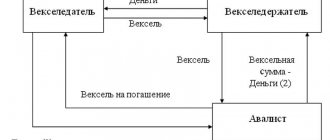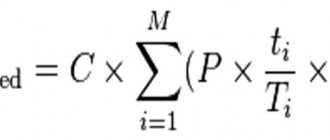What are they and why are they needed?
AIs occupy a significant share in the investment market. In most cases, they are necessary for enterprises that have their own production. Funds are invested in the quality of the product, but do not in any way affect production volumes.
The essence of investment
Start-up companies are trying in every possible way to gain a foothold in their industry. It is important for the manufacturer that his product is purchased not just once, but constantly. To do this, you need equipment that will increase the quality characteristics of the product, or the purchase of decent raw materials. But at the initial stage, entrepreneurs are financially limited.
And then investors come. Usually these are people who are well versed in business. Their main goal is to obtain a stable profit throughout the entire activity of the enterprise. Before investing, investors conduct analysis to compare their costs with the effectiveness of their application.
The discounting method (determining net present value) is most often used. Based on the results obtained, decisions on project selection are made.
Application
Autonomous investments can be used to cover the costs associated with an increasing population. For example, our manufacturer is a leader in its industry. The demand for the product is rapidly increasing, and therefore the price is also increasing. There is a need to increase production volumes, but this entails certain costs.
Or a situation will arise where the volume has increased, but the quality of the goods produced has suffered. As a result, demand for products decreased. Under these conditions, autonomous investments will be required, which will be aimed at improving quality: high-quality raw materials, additional equipment, personnel training.
The amount of investment is in no way affected by national income, because their main function is to generate additional profit. But investments themselves play an important role in shaping the growth or decline of national income.
Reasons for the need for autonomous investments
Today, there is fierce competition in all industries. And companies, in order to stay afloat, have to respond in a timely manner to changes in the market economy, to be in constant motion: create new services, or improve the quality of existing ones. Then the need for autonomous investments arises.
Reasons for appearance:
- improving the quality of life of the population;
- the economic growth;
- fulfillment of obligations to citizens in the social sphere;
- strengthening the manufacturer’s existing position in the market;
- training and preparation of new specialties.
AI sources
Autonomous investments are implemented by the state, so the main sources will be state budget funds. But not only them: funds from foreign partners and external loans are also attracted. AIs do not depend on national income; proper financing will influence the growth of economic indicators.
Where are they heading?
AI can give new life to existing enterprises by improving services and modernizing production.
Addressees of autonomous attachments:
- Development of government institutions (plants, factories, laboratories). Hundreds of such organizations are suffocating from lack of funding. And the goods are most often imported from abroad.
- Support for the service sector. Organizations need investments to purchase special equipment.
- Health financing. Due to the lack of necessary equipment, complex operations are not carried out in our country. But in the end, there is no breakthrough in medicine.
AI example
A striking example of autonomous investment in macroeconomics is the funds allocated for the development and maintenance of the state’s social policy. Maintaining social sustainability will not depend on economic indicators. The level of investment in the social sector remains approximately the same every year.
In the context of microeconomics, an example of autonomous investment is funds allocated to improve the quality of manufactured products or services. This could be the purchase of new equipment, tools, new technological lines. All this increases the quality of products, but in no case its quantity.
Multiplier theory. Cartoon effect. Acceleration principle
The concept of “multiplier” means “multiplying” and was introduced into economic theory in 1931 by the English economist R. Kahn. During the period of struggle against the crisis and unemployment, he found that government spending on any area of public works leads to a “multiplier” effect of employment. Every new area of work, generating primary employment, acts as an impetus for corresponding costs in other interconnected areas, causing secondary, tertiary, etc. employment. Thus, the initial costs are “multiplied” by multiples of employment.
In the theory of J. Keynes, a multiplier is understood as a numerical coefficient that shows the dependence of changes in income on changes in investment. The multiplier effect in a market economy is that an increase in investment leads to an increase in national income, which increases by a much larger amount than the initial increase in investment. This is the result of the fact that investments, in addition to the primary effect in the form of growth in national income and employment, cause secondary, tertiary, etc. effects. This growing effect is called the multiplier effect. Its quantitative value is determined by a special numerical coefficient - the multiplier (K), which shows the ratio in which national income (Y) increases compared to the increase in investment (J) when the equilibrium state of the economy is reached.
or ΔY = K ΔJ
, i.e., the multiplier multiplied by the increase in investment shows the increase in national income.
Let us determine the numerical values of the multiplier according to our country’s data for 1988–1989. In 1988, the increase in capital investments (investments) compared to 1987 amounted to 13 billion rubles. Produced national income during this period increased by 31 billion rubles. Therefore, the multiplier was 2.4. In 1989, the increase in capital investment decreased to 10 billion rubles, and national income increased to 43 billion rubles. As a result, the value of the multiplier increased to 4.3 (National Economy of the USSR in 1990 - M., 1991. - P. 5). Although this example is largely conditional, to a certain extent it reflects the actual state of economic development.
Let's consider the mechanism of formation of the multiplier effect. First, we note that the created national income, as well as its increment (ΔY), is divided into the consumed (ΔC) and saved (ΔS) part, which is fully used for investment (ΔJ), then
ΔY = ΔC + ΔS = ΔC + ΔJ
,(16.2)
from here
ΔJ = ΔY – ΔC
.(16.3)
In equation (16.1) we substitute the value ΔJ - formula (16.3), then
K = ΔY / (ΔY – ΔC)
.(16.4)
Let us transform equation (16.4) by dividing the numerator and denominator by ΔY. Then
K = 1 / (1 – ΔC/ΔY)
.(16.5)
It was shown above that the ratio of the increase in consumption (ΔC) to the increase in income (ΔY) represents the marginal propensity to consume (C).
C = ΔC/ΔY
.(16.6)
Then equation (16.6) will take the form
K = 1 / (1 – C)
.(16.7)
It follows that the multiplier K is equal to one divided by the difference between one and the “marginal propensity to consume.” From equation (16.2) it follows that the sum of the “marginal propensity to consume” and the “marginal propensity to save” is equal to one. Using the conclusions of research on consumption and savings (clause 16.1), we obtain:
As a result, in equation (16.7), the denominator (1 – C) represents the “marginal propensity to save.” Therefore, the multiplier is the inverse of the marginal propensity to save.
To study the multiplier effect, we use a conditional example. Let the initial investment volume be 50 billion rubles. This will cause an increase in income for those employed when performing work by the same amount, i.e. by 50 billion rubles. At the same time, workers spend 75% of their income on consumption, and save the remaining 25%. Then the consumer function will take the form C = 0.75Y. For these workers, the marginal propensity to consume is 0.75, and the marginal propensity to save is 0.25. Due to the increase in income, they will have increased consumer spending in the form of goods produced by other producers. These expenses will amount to 50 billion rubles. ~ 0.75 = = 37.5 billion rubles. This amount will be used to produce additional goods for consumers.
In turn, producers of these goods will receive income in the amount of 37.5 billion rubles, of which 75% will be used for consumption, i.e. 37.5 billion rubles. ~ 0.75 = 28.125 billion rubles, which are also spent on the purchase of goods, etc. Based on the repeatability of the primary effect of primary investments, this chain will take the form ΔND = ΔJ + ΔJ ~ 0.75 + ΔJ ~ 0.752 + ΔJ ~ 0.753 + ... This process can be represented as an infinite geometric progression.
If we accept that ΔJ = 1, and MRC = 0.75 as the value of P, then this progression will take the form 1 + P + P2 + P3 +… + Pn
.
The sum of such an infinite progression for |P| < 1
determined by the formula
1/(1-P)
.
This equation in this case corresponds to the equation of the numerical multiplier coefficient.
In conclusion, it should be noted that the multiplier effect manifests itself only in a society in which there is underemployment, that is, there is a reserve of labor, the involvement of which in the production process will lead to an increase in output and national income.
The principle of acceleration . Accelerator (accelerator) is a coefficient that represents the ratio of investment growth to the relative increase in income that caused it:
where A is the accelerator; J – investments; Y – income.
The accelerator serves as a quantitative expression of the principle of “acceleration”, according to which each increase or decrease in income causes (or requires) an increase or decrease in “induced” investments. This principle was put forward in 1913 by the French economist A. Aftalion (1874–1956) and in 1919 by the American economist J. Clark (1884–1963) and was subsequently used in neo-Keynesian models of economic growth.
The acceleration principle denotes a sharper dynamics of growth (decrease) of investments compared to the dynamics of income that causes them. If fixed capital of 0 million wears out by 10% (million), then investments will be required not only to replace the worn-out capital in the amount of million, but also to additionally expand capital to meet increased demand. Consequently, a 10% increase in demand for finished goods causes gross investment in equipment to double.
Kinds
Autonomous investments are divided according to their size and purpose.
State
To improve the quality of life and strengthen the well-being of the population, the state invests part of the funds in various areas that will produce results in the future (in 10–20 years).
The main areas of public autonomous investment include:
- Updating existing infrastructure (road repairs, construction of new social facilities, railway modernization).
- Development of the healthcare system.
- Development of the latest technologies and research in medicine, education, and production.
- Development of existing and introduction of new educational systems, etc.
Based on the research results, the required amount of investment is determined, which is subsequently included in the country’s budget for the next year.
Individual
The main reason for the emergence of individual autonomous investments is increased competition in the foreign and domestic markets. To reduce modernization costs and cope with competition, business owners are forced to invest money. This type is called individual, since they are invested directly by the owner of the company or a third-party investor.
Autonomous investments: what is it, for what purpose are they made, forumla
The concept of investment in itself is very capacious. There are a huge number of investment projects, the income from which depends on external and internal economic conditions.
Standing apart are autonomous investments aimed at improving the quality of production and state infrastructure. Such investments are designed to improve the overall industrial condition of a particular country.
The essence of the concept and its definitions
Experts identify several main interpretations of the term autonomous investment:
- Capital investments, the volume of which does not correlate with the gross national product. In other words, funds are used to develop government infrastructure, socio-cultural and construction industries.
- Cash injections aimed at replacing retiring capital. Experts with a certain level of financial literacy explain this formulation as follows: financial resources are used to purchase consumables and equipment.
Both definitions complement each other and help to understand the whole picture.
The main function of autonomous investments is to maintain the operability of the enterprise and increase the volume of funds poured into fixed capital.
In most cases, the largest volumes of autonomous investments come from the state budget, from foreign investors or from external loans. Such investment allows us to improve product quality and strengthen the company’s position in the market.
Difference between types of investments.
Types of public autonomous investments
Expenditures from the state economy aimed at improving or maintaining socially significant and strategic facilities are, in fact, autonomous investments.
The main sectors of the state economy in which autonomous investments are made can be divided into:
- social sector;
- infrastructure, including roads and transport;
- educational sphere;
- healthcare system;
- expenses for inventions and science;
- culture and sports.
The highest priority area of investment from the national budget is the construction and repair of road surfaces. The quality of roads directly affects the efficiency of the economy, so the priority of any state is the development of railway coverage, air transport and expressways.
Autonomous public investments do not include:
- spending on increasing the capital of municipal enterprises;
- costs for the development of state-owned companies and national corporations;
- investment in real estate and housing construction.
The indicator that determines the type of investment is the change in the gross national product. If capital investments do not lead to economic growth, then they belong to the autonomous type. That is why this type of financial injection is called autonomous or independent, since it is in no way connected with the economic state of the state.
In general, the effectiveness of autonomous investments can be determined after a long period of time.
Over the long term, independent investment affects:
- state of the economy;
- quality of life of citizens;
- number of highly qualified specialists.
Thanks to independent investments, the state can still make a profit, but only indirectly and in the long term.
Investment calculation.
Independent real investments
Some experts interpret the term autonomous investment as a share of real investments, the size of which does not depend on the profit, income or expenses of the company. Cash is sent directly to the enterprise's fixed capital, regardless of the success of the reporting period.
Improving the technology, equipment, tools and other elements of the organization's technical base is an independent investment. Such investments directly contribute to improving the quality of products and can significantly increase income in the future.
A simple example: an organization made a good profit from placing certain new products on the market.
Funds aimed at maintaining the activities of the organization, replacing outdated material and technical base and purchasing consumables are autonomous investments.
Investments in marketing, capacity expansion, technology changes, and new product development are variable investments.
Mathematical approach to investment
In general, investment costs can be described using a simple formula:
By simple manipulations you can transform the identity and get:
e = I – fY
The most significant factors influencing the amount of independent investment are the propensity to invest f and profit Y. In general, the amount of autonomous investment is equal to the amount of funds allocated to the fixed capital of the enterprise with zero profit.
It is quite obvious that this formula does not allow us to fully understand the effectiveness of autonomous investment in the potential of an enterprise. Moreover, the identity in no way makes it possible to evaluate the effectiveness of investment in companies that do not produce any products useful for the market. Such organizations include deposits in mutual funds and ETFs.
The volume of independent investments may depend on several main factors:
- the amount of financial costs of the institution;
- investor expectations and projected business growth;
- the need to change the technology of product production.
Advantages and disadvantages
Of course, a big plus is the independence of autonomous investments from national income, in contrast to induced investments, the value of which is directly related to fluctuations in the country’s total income. The advantages include accelerating business growth and sharing business risks with the investor.
The main disadvantage is the control of funds by the investor and the risk of his excessive interference in business management.
Risks and pitfalls
Expert opinion
Vladimir Silchenko
Private investor, stock market expert and author of the Capitalist blog
Ask a Question
Risks are part of the investment process. AI are attracted to develop a promising project that generates income in the long term. However, there is a risk that these investments will not pay off. To evaluate the effectiveness of investments, results are periodically analyzed.
Indicators are subject to comparison before the start of investment and at the time of analysis. Improved product quality or a significant increase in production volumes indicate the economic efficiency of autonomous investments, which manifests itself in increased profits.
Autonomous investments - what is it, essence, concept
There are two main interpretations of this term. The first interpretation of the concept: these are investments, the volume of which does not depend on the values of the national gross product. Simply put, this is money that the state allocates to improve infrastructure, the socio-cultural atmosphere in the country and other areas important to society.
The financing of the social insurance sector is an ideal example. These are investments, the volume of which will always be approximately the same, regardless of GDP indicators in a particular year.
The second interpretation is more vague and does not contradict the first. The term “autonomous investment” also refers to money in the form of real investments that are aimed at replacing retiring capital.
Let's try to simplify this expression again.
Initial real investments can already be considered autonomous; subsequently, money for replacing consumables, tools and other similar inventory items is also classified in this category.
However, it cannot be said that these investments are a completely independent phenomenon. The line between this concept and depreciation expenses (gross investments) is very thin and sometimes completely blurred.
In this article we will talk mainly about real investments, and also touch on some important concepts for a financier that guide an enterprise manager when determining the volume of autonomous investments that are optimal for maintaining the successful functioning of a business.
Autonomous state investments include almost all budget expenditures that are made to improve or maintain the operational qualities of socially and strategically significant facilities. Regardless of the performance of the national economy, the state must constantly improve infrastructure.
Main areas of government subsidies:
- Social sector;
- Infrastructure;
- Education;
- Healthcare;
- Culture and sports.
The most important area of government investment is the construction of roads and elements of telecommunications infrastructure.
The country's transport system directly affects the efficiency of the economy as a whole, and therefore it is the development of roads, aviation and railway transport that any country pays the greatest attention.
Government investments cannot be classified as autonomous investments, which are often aimed at enlarging the authorized capital of municipal enterprises or at developing state-owned companies and corporations. Investments in housing construction by the state should also not be classified as autonomous, since they affect the volume of gross domestic product.
To make the division of investments more clear to the reader, we advise you to simply look at the impact of the invested money on the gross profit. If investments do not influence the formation of the national gross product, then they are autonomous. And vice versa. That is why they are called autonomous (independent), due to the lack of a direct connection between NVP and the money spent by the state.
At the same time, investments of this nature always have a clear goal. In the long term, autonomous investments can improve the state of the economy, increase the quality of life, or train more specialists, which will affect the performance of the national economy in decades to come. Theoretically, these investments are aimed at making a profit, but in an indirect way.
Another interpretation of the concept, taken straight from the dictionary: “The share of real investments that do not depend on production factors.” In this case, we are talking about investments that do not depend on profits, income and expenses. This is money that is directed to the company's fixed capital and assets, regardless of how successful or unsuccessful the previous reporting period was.
Any operations to improve or maintain the material and technical base of the enterprise, which will be done in any case, can be considered autonomous. Without these investments, the enterprise can operate, but production efficiency will be in question. This is not cash necessary for survival, but capital necessary to ensure the company's potential for the foreseeable future.
This type of investment is one of two fundamental types of investments, the second being variable investments, which directly depend on the profit of the enterprise.
The second type of investment is related to the growth of the enterprise and, in fact, is the exact opposite of the first.
In this case, the money has a direct impact on the gross national product, and is also aimed at improving the production or infrastructure of the enterprise in one way or another.
Let's give an example. There is an enterprise that has received significant profit from introducing a new product to the market.
Money that is used to maintain the general operations of the enterprise, replace outdated equipment and purchase consumables can be considered autonomous investments.
Money from profits spent on marketing, expanding production capacity and releasing new products is variable (induced) investment. Many of the operations of an enterprise are carried out within the same type of investment.
Of course, there is a formula for calculating the volume of autonomous investments and it is presented in the following form: I = e + fY.
In this expression: I – investment expenses, Y – units of profit (money or material assets), e – autonomous investments, f – marginal propensity to invest. Based on this equation, we can deduce: e = I - fY.
This formula will not allow us to assess the effectiveness of subsequent investments and only allows us to determine the nature of the financial activity of the enterprise.
It is of little use to mutual funds or other companies operating in the field of trust management and not producing any products.
Independence from the presence of large volumes of autonomous investments in financial institutions that are presented in our rating of companies makes it possible to simplify the analytical side of their study and choice for the investor.
Now a little more about what the variables in the formula mean. Investment expenses are the general expenses of an enterprise aimed at maintaining and developing production or increasing sales. Profit units are most often expressed in monetary units and actually represent the profit of the enterprise for a particular reporting period.
The important variables for us are “ e ” and “ f ”. Independent investments are equal to the amount of funds that will be allocated to fixed capital in one form or another if the profit value is zero.
The empirical value of this variable is almost always greater than zero. Marginal propensity to invest (MPI)
Marginal Prosperity to Investment) reflects the share of profits that will be used to improve production and conditions for selling products.
The expression " fY " itself is a reflection of induced or variable investment.
The term MPI is flexible and can be applied to the consumer sector, private construction. In this case, they talk about the concept of MPC (Marginal Prosperity to Consume) or marginal propensity to consume. Essentially, the two concepts represent “one porridge eaten with two spoons.”
Source:
Autonomous investments
Autonomous investments are necessary to improve the condition of the company's equipment and real estate, optimize management processes and train its employees, as well as improve production activities in general. Ultimately, all this leads to increased profits.
Regardless of the level of national income, investments of this kind are necessary and are carried out permanently. Since they are independent of income, they are called autonomous.
Autonomous investments are funds that are invested in the development of an enterprise, but are not reflected in the volume of production.
If we consider investments on a national scale, then autonomous ones are investments in the development of infrastructure, STP (scientific and technological progress), flow investments aimed at maintaining and exploiting the products of scientific and technical research, discoveries, and research.
Source: https://s7reut.ru/prochee/avtonomnye-investitsii-chto-eto-sut-ponyatie.html
Calculation formulas with examples
The first indicator that an organization must calculate in the process of determining the amount of required investments is capital intensity. It characterizes the amount of financial resources spent on the production of one product unit. Along with this, the demand growth rate parameter is used.
The use of induced investments is important with ever-increasing demand.
- If it increased over a certain period of time and was episodic, the effect may be the opposite. After all, there is a possibility of an increase in value and an increase in the income of the enterprise.
- If it increased, but this happened for some time, and the organization invested in expanding production assets, there is a possibility of a negative effect. The financial stability of the company may suffer.
To determine the amount of induced investment, you should use the following formula:
I = K (K) * (Y1 – Y), where
- I – induced investments;
- K is the value of capital intensity found in the previous paragraph;
- Y is the amount of national income of the state.
What to consider when using
The reason for attracting induced investments is the increase in aggregate demand for the product that is produced, as well as the general improvement in the standard of living of the population, achieved through the growth of their income.
An important role is played by such a parameter as the national income of the state. It has a direct and immediate impact on the overall dynamics of investments made. The indicator includes the following elements:
- citizens' salaries;
- profit of organizations;
- own.
Its value is the sum of all goods manufactured on the territory of the state. The costs of production activities are deducted from it. The higher this parameter, the better for the state and its citizens.
After all, this leads to increased purchasing power and increased demand for goods and services. As a result, the business expands, and new directions for launching induced investment appear.
Autonomous consumption: calculation
Autonomous consumption is the population's expenses that do not depend on the amount of income and are covered by personal savings or loans. If earnings are less than the established subsistence level, then the person does not reduce consumption, but borrows funds from other sources (loans, savings deposits).
Total consumption can be determined using the formula:
| C = a + bYd |
Where:
- C – total consumption;
- a – autonomous consumption;
- Yd is disposable net income.
In this case, a > 0, because even persons without earnings will consume a minimum set of products for survival, through borrowing or selling existing assets.
Thus, we can express the formula for autonomous consumption:
| a = C – Yd |
In this case, the amount will depend on total assets, expectations of future income, receipt of an inheritance or the cost of living.
Features of induced calculation
Along with all of the above, it is worth considering the indicator of induced consumption. It represents part of the population's expenses, depending on the amount of national income.
The indicator is not constant and depends on the earnings of specific citizens of the country. If income is less than the subsistence level, consumption remains at the same level. Then you need to sort out the debts that have arisen.
Thus, attracting induced investments is required to expand the production base with an increasing level of demand in order to fully satisfy it. They are not used to repair old equipment, but only to purchase new units. To determine this indicator, it is customary to use a special formula.
You can learn more about the types of investments from the video below.










